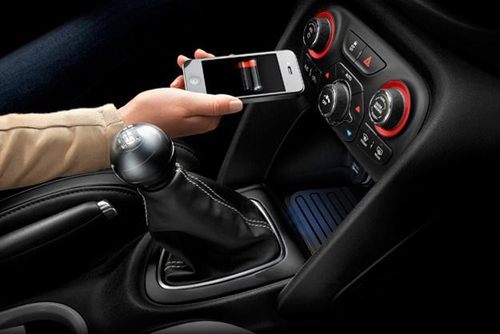Car technology is rapidly changing. One of the next breakthroughs is cars that charge your smartphone wirelessly while you drive. How is this possible?

One of the latest phone breakthroughs of the last several years has been wireless charging of handheld devices. Everything from a Blackberry, iPhone and other devices can be charged without having to worry about wires and external adapters. A great benefit of wireless chargers is there is almost zero risk of electrical shock since no direct current passes between devices.
There are two distinct types of wireless charging – inductive and conductive. Each technology requires a charging mat and a case or sleeve to attach to the wireless device. The sleeves can be custom made for each device type and are required for the charging process.
Inductive Charging
Inductive charging works through the transfer of energy between magnetic fields. Electrical current passed through a wire coil produces a magnetic field. Two induction coils placed near each other create a transformer. As current is passed into the charging mat, the primary electrical field is created. The custom sleeve for the mobile device, while not powered also contains an induction coil. This coil connects to the battery in the mobile device. When the device is placed near the charging mat, current is passed to it through the process of induction. While inductive charging does not charge as quickly as a wired adapter, it is very reliable and much safer.
Conductive Charging
Conductive charging requires the charging pad and mobile device to be in direct contact with one another to pass current through their special conductive surfaces. The charging pad and case both contain a special conductive surface to pass the current between the two. The energy is then converted and passed to the battery. Inductive and conductive systems can both charge the same types of devices.
As the automotive industry has explored wireless charging, the conductive system appears to be the preferred method. The likely placement of the charging pad will be near or around the center console in most vehicles. This placement will be the most ergonomic for drivers and passengers. The charging pad will also be big enough to accommodate several devices.
In 2013, Chrysler will be the first major manufacturer to offer this technology in their new vehicles. It makes its debut in the second quarter of 2013 Dodge Dart as a factory installed option. Dodge will be using a conductive system that will be capable of charging phones and MP3 players while the car is running. Customers will be able to purchase the package through the parts and accessories division of Mopar. Smartphones will require a special case that will be included with the installation package.
Is the new Dodge Dart just the beginning? Probably yes.




